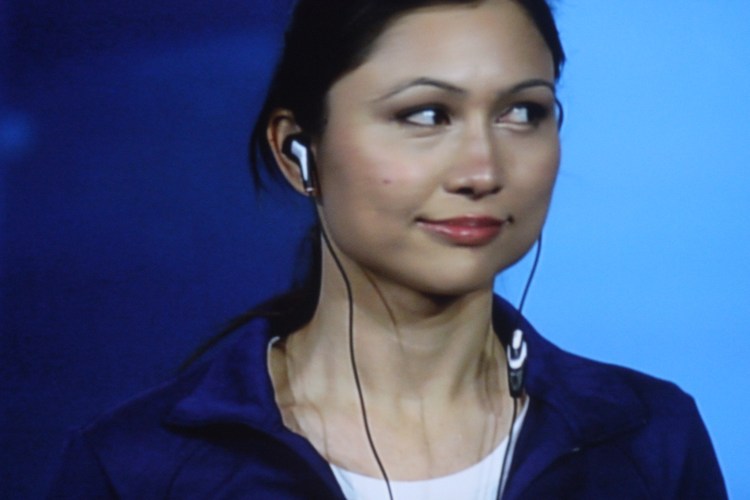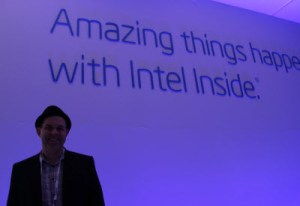VB: What else in the keynote were you involved with?
Holmes: We worked on the Charging Bowl, the watch, the earpieces, and the headset.
VB: So almost all of what we’d call the fashion-related things.
Holmes: Yeah. Anything that’s a wearable. The charging bowl was one exception, but it was a thing that came around—If you start to think about having a smart watch and a smart earpiece and a smart belt buckle, at the end of the day you don’t want to spend 15 minutes trying to find all the cables and plug everything in.
A lot of what we’re trying to do is not just solving the problems of building great products, but reducing the friction that prevents people from using them all. It’s one of the challenges we’ll be facing in the wearable space. You need to make it so using this doesn’t become a chore. We can help with that in lots of ways.
VB: That whole movement toward the quantified self and all these fitness gadgets, what are your larger thoughts on that trend? Where is it going to go? How many people are going to get into it?
Holmes: You’ll have to excuse me a bit, because my last job was at Nike, where I was responsible for some of the Nike+ products. But I do strongly believe that there will be an expectation that everyone is wearing some of these tracking devices. Understanding your fitness and being able to see how what you do relates to how you feel and how healthy you are, it’s a basic human need.
Again, I think the biggest challenge right now is that it takes work to maintain these devices – plugging them in, sharing them with their phones, charging them. As a technology company, Intel can help solve some of those basic problems, so that everyone gets the benefit of this technology. I’ve seen that it can dramatically change people’s lives. It inspires them to do more, to be more fit, to head off problems, and get more out of their lives. But there’s only a certain amount of effort that people can afford to put into it. We can help fix that.
If you look at the earlier ages of computing, you had Unix and DOS and the like, and it was a limited group of engineers and computer scientists who could get maximum value out of a PC. Today, every child from the age of three on up is using one. That’s the kind of simplification and improvement of the experience that we need.
VB: Do you see some of these trends as connected, like the mass customization trend and fitness devices? Are there a lot of dots that your organization is connecting to see where this is all going to go?
Holmes: That’s part of our obligation, certainly, to see how we can connect these things together. A lot of the time, the things that dramatically improve people’s lives don’t revolve around a single innovation. It’s three or four of them that come together and build into a greater story.
I would say that one of the things about wearables is that they’re a very personal product. Unlike a phone, where you’re maybe not uncomfortable that everyone sitting at the table has the same phone, you may not want to have the same wearable or the same smart jacket as everyone else, or whatever it is. There’s more individuality, and some of the technologies like 3D printing offer more opportunities there.
VB: Is there a certain part of this that feels like a fad, or some other part that seems more real to you? One year we’ve seen a few of these guys come out, the next year there’s 20 of them, the next year it’s hard to say where it’s going.
Holmes: The good news is that the barrier to entry for building these devices is going down a lot. Edison is a good example. With Edison, anyone could theoretically ship a wearable in the near future. I don’t think that it’s a problem, necessarily, that there are a lot of people bringing things out. But the ones that are going to be successful are the ones that solve problems for people and build things that have lasting value.
It’s like mobile phones. There are only a few dominant players in the mobile phone space, and it’s because they’ve invested and thought through solving problems that meaningfully affect people’s lives.
VentureBeat's mission is to be a digital town square for technical decision-makers to gain knowledge about transformative enterprise technology and transact. Learn More







![Reblog this post [with Zemanta]](http://img.zemanta.com/reblog_e.png?x-id=1cca8200-46e6-404a-8da0-f933fbfe116b)
